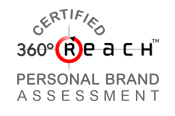 Every thought drives your results . . . so, why not harness the power of your thoughts?
Every thought drives your results . . . so, why not harness the power of your thoughts?
When you are ready to impact your results in record time, understanding and using the energy of your thoughts is one of the fastest ways to achieve the results YOU want.
Thoughts ==> Beliefs ==> Actions ==> Results
Your thoughts drive your beliefs, your beliefs drive your actions, and your actions drive your results.
The process is simple. In fact, it is so simple that most people overlook it or assume there is no value in the process.
You have thousands of thoughts a day, including many you are not even conscious of. It is time to tune in to your thoughts.
Tuning in to your thoughts allows you to be more intentional — often in a matter of days. Conscious or not, your thoughts create your beliefs, your beliefs create your habits, and your habits drive your actions. Your actions always create your results.
Do you have doubts? I get it. I doubted for a long time.
Why did I doubt? I looked around and saw so many reasons for my lack of results. It seemed changing my actions had little impact. Then my coach asked me one simple question. This one question was all it took for me to see and harness the power of my thoughts in a more meaningful way. Are you, too, looking for this type of powerful shift? The kind of shift that will accelerate your career and shorten your search time?
The starting place for the shift lies in knowing the power of your thoughts — not just understanding, but truly knowing.
The first step to knowing is to examine the process in reverse (Results ==> Actions ==> Beliefs ==> Thoughts).
As an example, here is how I assisted a recent coaching client reverse the process and harness the power of his thoughts. This particular client wanted his next career move to include a step up in responsibility with a new organization and his search needed to be confidential.
We discussed the process in reverse:
Result: No positive contact after 11 months and the door had been closed.
Actions: Identified the contact; got a warm introduction; reached out; followed up; repeated follow up; had a brief phone conversation that closed with no clear next step; ended with a reply from the contact instructing my client not to follow up in the future.
Beliefs: contact was too busy; contact had many responsibilities; there was no value in the contact talking to candidates when the organization was not officially hiring.
Thoughts:
- “I will do this because it is what I should do, but no one this busy will take time to meet with me.”
- “When I was working I would never waste my time this way.”
- “It is not this contact’s job to talk to people, it is his job to get the work done.”
What do you think impacted this client’s results? What drove his results?
The client saw the power of his thoughts (and their impact on his results) in a matter of minutes. He immediately understood what he needed to shift to accelerate his search.
Your thoughts are very powerful. If you don’t like your results take a look at your beliefs and your thoughts.
Tune in. Know your thoughts. Harness their power. Every thought drives your results.
Share your thoughts below and if you need assistance accelerating your search, contact me.


 Is your resume stale and lifeless? Or is it full of energy and relevant data about you and what you do?
Is your resume stale and lifeless? Or is it full of energy and relevant data about you and what you do?

 Do you remember how enthusiastic and excited you were after your first interview? I hope so. You will need to continue to share that level of interest with the hiring manager as the process continues.
Do you remember how enthusiastic and excited you were after your first interview? I hope so. You will need to continue to share that level of interest with the hiring manager as the process continues.




